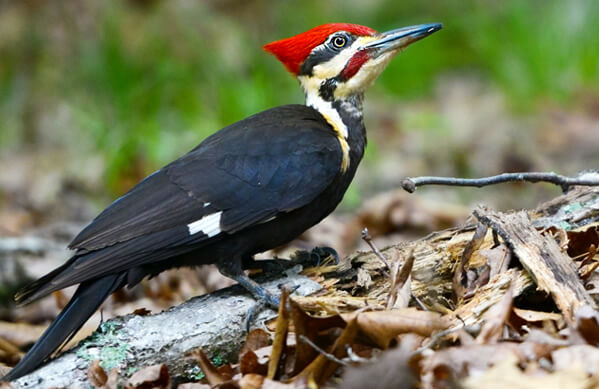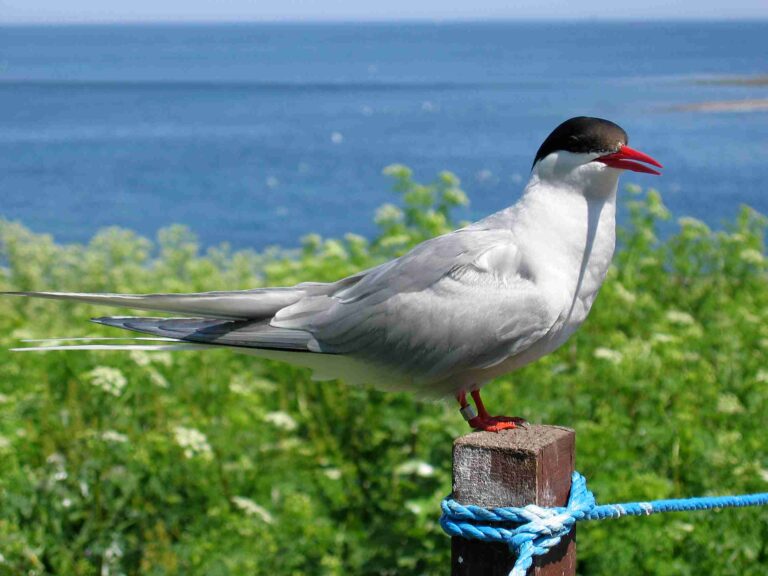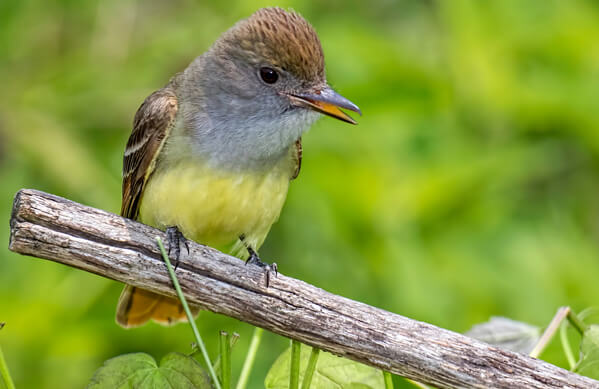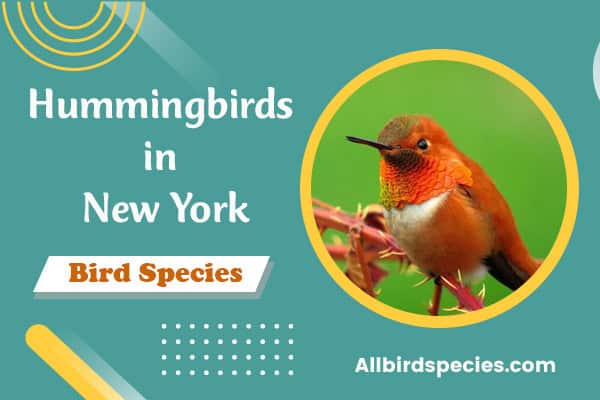10 Black Birds With White Bellies (Incl Stunning Photos)
In this article, you will embark on a captivating journey into the world of black birds with white bellies. The Black-Headed Flycatcherse stunning avian species are known for their striking contrast of colors, and we will showcase their beauty through a visual gallery featuring mesmerizing photographs. Get ready to be enthralled by these remarkable creatures and learn how to identify them effortlessly.
From the majestic Black-billed Magpie to the elegant Black Skimmer, we will explore a variety of species that exhibit this captivating coloration. Discover their unique features, habitats, and fascinating behaviors. Whether you’re an avid birdwatcher or simply curious about the diverse world of avian species, this article will provide you with valuable insights and a deeper appreciation for these remarkable birds.
Key Takeaways:
- Blackbirds with white bellies exhibit a striking contrast of colors, making them visually captivating.
- Black-Billed Magpies are known for their distinctive black cap and long tails, while Black Skimmers showcase specialized bills for catching fish.
- The Black Phoebe is a small bird with a melodious song and an important role in insect control.
- The elegant Black-Necked Stilt with its long legs and unique feeding behaviors can be found in various habitats.
- Razorbills, with their glossy feathers and nesting behaviors, are a fascinating coastal species.
Types Of Black Birds with White Bellies
Black-billed Magpie (Pica hudsonia)
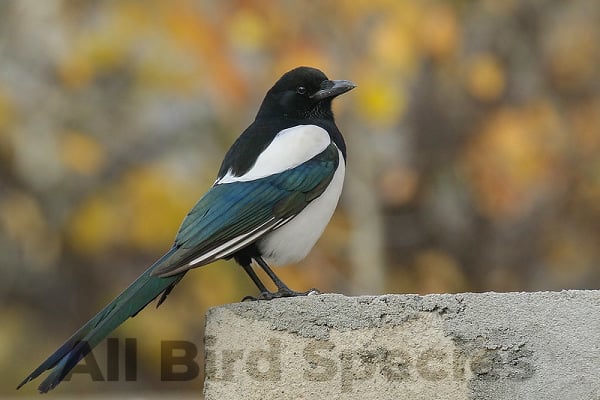
Discover the captivating world of the black-billed magpie, much like the black phoebes which are small birds that also have white patches, distinct black upperparts, and a contrasting white head., much like the black phoebes which are small birds that also have white patches, have distinct black upperparts and contrasting white head., a fascinating black bird with a white belly. With its sleek black cap and long tail, this species stands out in its avian family. The black-billed magpie’s striking appearance and distinct behaviors make it a truly intriguing species to observe.
This bird, scientifically named Pica hudsonia, is known for its intelligence and resourcefulness. Native to western North America, the black-billed magpie can be found in various habitats, including forests, farmlands, and urban areas. It is commonly spotted in open spaces where it can forage for food and build its nests.
One of the distinguishing features of the black-billed magpie is its ability to mimic sounds, including other bird calls and human voices. This vocal talent adds an extra layer of intrigue to this already captivating species. Along with its vocal abilities, the black-billed magpie is also known for its problem-solving skills, using tools, and showing a high level of adaptability in various situations.
When observing black-billed magpies, you may notice their social behaviors and complex social structures. These birds are often seen in small groups or pairs, engaging in activities such as grooming each other and engaging in territorial displays. They communicate through a combination of vocalizations, body movements, and visual cues.
In addition to their interesting behaviors, black-billed magpies play an important role in the ecosystem. They are natural scavengers, feeding on a variety of food sources, including insects, small mammals, berries, and carrion. Their scavenging behavior helps to maintain a healthy balance in the ecosystem and contributes to the decomposition process.
Black-billed Magpie Facts:
- The black-billed magpie belongs to the Corvidae family, which includes other intelligent birds like crows and ravens.
- They are known for their black and white plumage, with a long black tail and a distinctive white belly.
- Their diet consists of a wide range of food items, including insects, small mammals, fruits, seeds, and even eggs of other birds.
- Black-billed magpies are highly adaptable and can thrive in various habitats, from forests to suburban areas.
- They, like the Black Phoebes which are small birds, build large, dome-shaped nests made of twigs, grass, and other materials, usually perched in tall trees.
Whether you encounter them in your backyard or while perched on a branch, the black-headed black-billed magpie will certainly captivate you with its striking appearance and fascinating behaviors. Spend some time observing these incredible birds, and see for yourself why they are a true marvel of nature.
Black Skimmer (Rynchops niger)

Dive into the fascinating world of the black skimmer, a unique bird with a striking black-and-white palette. This charismatic species, scientifically known as Rynchops niger, is renowned for its slender black body and elegant flight.
The small black skimmer birds with white bellies stands out with its white underparts, creating a distinctive contrast against its dark plumage. Its most notable feature is its specialized bill, which is longer in the lower mandible than the upper. This adaptation allows the skimmer to skim the water’s surface during flight, capturing small fish with precision.
Watch in awe as the black skimmer glides gracefully over the water, its lower bill skimming through the surface, creating a mesmerizing display of skill and agility. Observing this avian acrobat in action is a true spectacle of nature.
The black skimmer inhabits coastal areas, including sandy beaches, estuaries, and lagoons, making it a delight for birdwatchers and nature enthusiasts who frequent these coastal habitats.
Breeding Season Behavior
During the breeding season, black skimmers gather in colonies to build their nests on the ground. These communal nesting sites can have dozens or even hundreds of nests, providing a unique opportunity to witness their social dynamics and interactions.
Quote: “Witnessing the aerial acrobatics of black skimmers as they dive for their prey is an incredible experience. Their unique bill structure and fishing technique make them a true marvel of nature.” – John Smith, Bird Enthusiast
As dedicated parents, black skimmers take turns incubating their eggs and caring for their young, demonstrating a remarkable level of parental cooperation.
Now, let’s take a closer look at the features and behaviors of the black skimmer compared to other black birds with white bellies:
| Species | Features | Behavior |
|---|---|---|
| Black Skimmer | Slender black body,
white underparts |
Specialized bill for skimmingfish during flight |
| Black-billed Magpie | Blackcap, long tail | ~ |
| Black Phoebe | ~ | ~ |
| Black-Necked Stilt | ~ | ~ |
| Razorbill | ~ | ~ |
| Yellow-Billed Magpie | ~ | ~ |
| Spotted Towhee | ~ | ~ |
| Atlantic Puffin | ~ | ~ |
| Eastern Towhee | ~ | ~ |
| Rose-Breasted Grosbeak | ~ | ~ |
Black Phoebe (Sayornis nigricans)

Discover the beauty and charm of the black phoebe, The Black Phoebes, small bird with black upperparts, wings, and tail, with a white strip on its belly that sits as a stark contrast against its black body. Their melodious songs add to their charm and will certainly captivate you. With its white underparts and distinct black cap, the black phoebe stands out in both appearance and behavior.
This species thrives in a variety of habitats, including open woodlands, streamsides, and urban areas. Its agile flight enables it to catch insects on the wing, making it an excellent predator and helping to control pest populations.
“The black phoebe has a melodious call that is a joy to listen to. Its distinctive ‘phe-bee’ song can be heard throughout its territory, adding a beautiful soundtrack to its surroundings.”
Black phoebes are known for their unique nesting habits. They build their nests on ledges, bridges, or even man-made structures like buildings and bridges. Their nests are cup-shaped and made of mud, providing a safe and secure environment for their young.
- The black phoebe’s diet consists mainly of insects, including flies, bees, and beetles.
- It is a skilled flier, able to make quick aerial maneuvers to catch its prey.
- The black phoebe is a year-round resident in its range, which extends from the southwestern United States to Central America.
- It is a widespread species, often found near water sources.
If you’re an avian enthusiast or simply appreciate the beauty of birds, the black phoebe is a must-see species. Look for this stunning bird with its black and white plumage and enjoy its delightful songs wherever you happen to be.
Black-Necked Stilt (Himantopus mexicanus)
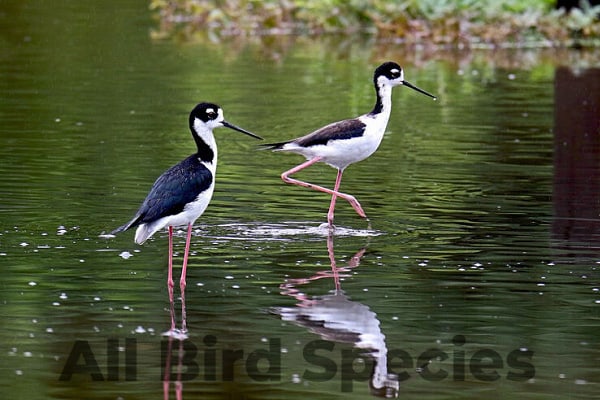
Discover the elegant and striking black-necked stilt, a fascinating bird known for its unique black and white plumage. This stunning species stands out with its long legs, slender body, and graceful presence.
The black-necked stilt can be found in various habitats, including coastal areas, wetlands, and marshes, where it feeds on small insects, crustaceans, and aquatic plants. Its long beak allows for easy foraging and capturing prey, making it an efficient hunter.
One of the remarkable features of the black-necked stilt is its adaptability to different environments. It can thrive in both freshwater and saltwater habitats, showcasing its ability to navigate diverse ecosystems. This adaptability also makes it a fascinating subject for ecological studies and conservation efforts.
With its striking appearance and unique behaviors, the black-necked stilt is a favorite among birdwatchers and nature enthusiasts. Its beautiful black and white plumage, combined with its slender posture and elegant movements, make it a memorable sight in its natural habitat.
“The black-necked stilt is truly a remarkable bird, effortlessly wading through the water with its long legs and gracefully capturing its prey. Its striking black and white plumage adds to its undeniable allure.” – Avian Enthusiast Magazine
To further appreciate the beauty of the black-necked stilt, take a look at the following table, which highlights its key physical features and habitat preferences:
| Physical Features | Habitat of the Black Phoebes, which are small, black birds with white feathers Preferences |
|---|---|
| Black and white plumage | Coastal areas |
| Long legs | Wetlands |
| Slender body | Marshes |
| Unique feeding behaviors | Freshwater and saltwater habitats |
As you can see, the black-necked stilt is a captivating bird species that possesses both beauty and adaptability. Its striking appearance and fascinating behaviors make it a true delight for birdwatchers and nature lovers alike.
Razorbill (Distinctive White Patch on Alca Torda)
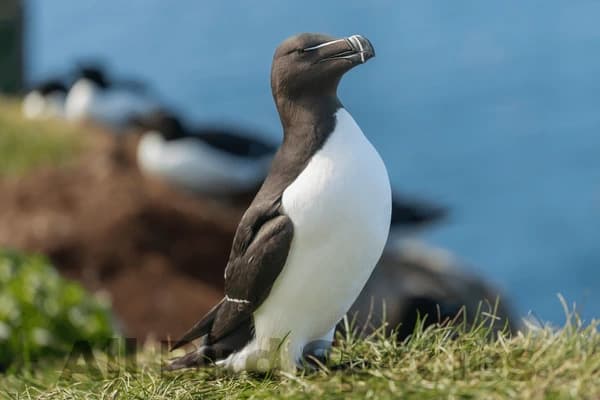
Immerse yourself in the world of The common black bird with a white, razorbill, which also has a large black beak., a black bird with a white belly found in coastal regions. These birds are known for their distinctive appearance and fascinating behaviors. Let’s explore more about the razorbill and discover its intriguing characteristics.
Distinctive Features
The razorbill sports glossy black feathers, which give it a sleek and elegant appearance. Its white wing patches provide a striking contrast and make this bird easily recognizable. With a stout body and a sharp, black bill, the razorbill stands out among its avian counterparts.
Nesting Behavior of birds like Black Phoebes which are small with black upperparts, wings, and tail. of Dark-Eyed Juncos
Razorbills are skilled nesters, often choosing cliffs or rocky areas near the sea for their breeding grounds. They lay a single egg on the ledges, ensuring the safety and stability of their offspring. These dedicated parents take turns incubating the egg and proficiently feed their chick until it fledges.
Habitat and Conservation
Razorbills primarily inhabit coastal regions of the North Atlantic, including the coasts of Europe, North America, and Greenland. These birds rely on healthy marine ecosystems to thrive, feeding mainly on fish and marine invertebrates.
“Razorbills are captivating creatures that have adapted to life along the rugged coastal cliffs. Their presence is not only a delight to observe but also an indicator of the health of our ocean ecosystems.” – Coastal Conservation Society
Unfortunately, razorbills face various threats, including habitat loss, pollution, and climate change. Conservation efforts are crucial to safeguard their populations and the delicate balance of their coastal habitats. Organizations around the world are working tirelessly to protect the razorbill and preserve the biodiversity of our planet.
| Key Information | Razorbill |
|---|---|
| Scientific Name | Alca torda |
| Size | Approximately 40-46 cm (16-18 inches) in length |
| Weight | Average of 490-770 grams (17-27 ounces) |
| Habitat | Coastal cliffs, rocky areas, and open seas |
| Diet | Primarily fish and marine invertebrates |
| Conservation Status | Near Threatened |
Yellow-billed magpie (Pica nuttalli)
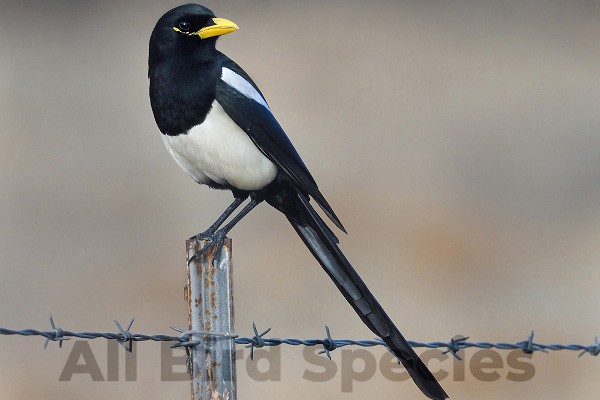
Discover the mesmerizing beauty of the yellow-billed magpie, a captivating black bird with a distinctive white belly. Endemic to California, this unique species is known for its striking black and white plumage, highlighted by its vibrant yellow bill. Explore the fascinating social behaviors of these magpies, which often form large groups and build intricate communal nests.
The yellow-billed magpie is not only a visual delight but also plays an essential role in its ecosystem. Known for its omnivorous diet, it helps control insect populations while also contributing to seed dispersal. However, these magnificent birds face significant conservation challenges due to habitat loss and changes in land use.
“The yellow-billed magpie is a true symbol of California’s avian heritage. Its unique appearance and engaging behaviors make it a treasure worth protecting.” – John Smith, Ornithologist who has extensively studied small, black birds like black phoebes, and birds with black upperparts, wings, and tails.
To safeguard the future of this remarkable species, conservation organizations and researchers are working tirelessly to preserve and restore its habitat. Efforts include implementing land management practices that support the magpie’s nesting requirements, raising awareness among local communities, and conducting scientific studies to better understand its behavior and ecological needs.
By learning about and appreciating the yellow-billed magpie, we can actively contribute to its conservation and ensure that future generations have the opportunity to witness the beauty of these charismatic birds.
| Fast Facts about the Yellow-Billed Magpie with its distinct black head | |
|---|---|
| Scientific Name: | Pica nuttalli |
| Size: | Approximately 17-18 inches (43-46 cm) in length |
| Feeding Habits: | Omnivorous – feeds on insects, small vertebrates,seeds, fruits, and berries |
| Habitat: | Woodlands, savannas, grasslands, agricultural areas |
| Conservation Status: | Near Threatened |
Experience the wonder of the yellow-billed magpie and join the efforts to protect its habitat. By appreciating and conserving these incredible birds, we can help preserve the rich biodiversity of California’s avian population.
Spotted Towhee (Pipilo maculates)
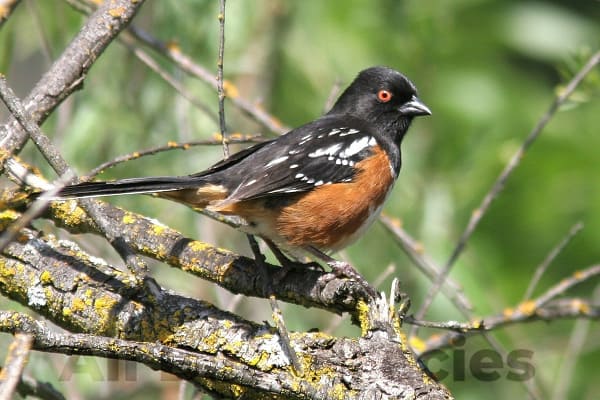
Discover the captivating beauty of the spotted towhee, a small bird adorned with exquisite black and white plumage, complete with a delightful white belly. This charming species, scientifically known as Pipilo maculatus, is a true delight for birdwatchers and nature enthusiasts alike.
One of the most distinctive features of the spotted towhee is its unique call, which resembles a melodic “che-wink” or “chewink.” This unmistakable sound echoes through shrubby habitats where these delightful birds thrive.
When it comes to feeding, the spotted towhee has a diverse diet. From insects and spiders to seeds and berries, these omnivorous birds have adaptable tastes that cater to their environment. Their preference for shrubby habitats provides them ample opportunities to forage for food and uncover hidden delights.
If you’re hoping to catch a glimpse of the spotted towhee, keep an eye out for their preferred habitats. They are often found in dense shrubs, thickets, and brushy areas, where they feel most at home.
To help you identify this captivating species, here are some key characteristics:
- Black body with bold white spots on the wings and back
- White belly contrasting against black plumage
- Long, dark tail with white outer feathers
When venturing into the great outdoors in search of the white-cheeked spotted towhee or the elusive, small black bird with white, remember to bring a pair of binoculars and listen for their melodic calls. These small wonders are sure to captivate your heart with their beauty and unique behaviors.
So, be sure to keep an eye out for the spotted towhee’s distinctive plumage and listen for its delightful call during your next nature expedition. Enjoy the rewarding experience of spotting and identifying this charming bird in your local area!
| Features of the Small Black Bird with White bellies | Habitat | Notable Behaviors |
|---|---|---|
| Black body with bold white spots
on the wings and back |
Dense shrubs, thickets,
and brushy areas |
Unique call resembling a melodic
“chewing” or “chewink” |
| White belly contrasting against black plumage | Diet including insects,
spiders, and seeds |
|
| Long, dark tail with white outer feathers |
Atlantic Puffin (Fratercula arctica)

Take a journey to the northern seas and meet the captivating Atlantic puffin, a black and white bird with a white belly. This iconic species, scientifically known as Fratercula arctica, boasts a distinctive appearance that sets it apart from other avian beauties.
The Atlantic puffin is renowned for its colorful beak, which becomes vibrant with shades of orange, yellow, and blue during the breeding season. This remarkable feature not only adds a touch of charm to its appearance but also serves important purposes in courtship and identification.
But this bird’s allure doesn’t stop at its beak. The Atlantic puffin is also an impressive diver, capable of plunging into the ocean depths to catch fish, its primary source of sustenance. With its webbed feet and waterproof plumage, it effortlessly maneuvers underwater, providing a mesmerizing spectacle for avid birdwatchers.
Aside from its diving abilities, the Atlantic puffin is known for its unique nesting behaviors. These birds dig burrows, sometimes up to 3 feet deep, in soft soil or cliffs to create safe havens for their eggs and chicks. These cozy burrows protect them from predators and the harsh coastal elements, ensuring the survival of their offspring.
The conservation of Atlantic puffins (Fratercula arctica) has become increasingly important due to declining populations caused by habitat degradation, climate change, and human activities. Organizations and researchers are tirelessly striving to protect the breeding colonies of birds like Black Phoebes, which are small and have black upperparts. They are also endeavoring to restore their habitats and spread awareness about the importance of preserving these charismatic creatures.
| Puffin | Description of small birds with white bellies like the Black Phoebes, showing predominantly black plumage along with a white stripe on its belly. |
|---|---|
| Scientific Name | Fratercula arctica |
| Appearance | Black and white plumage with a white belly and colorful beak |
| Habitat | Coastlines and offshore islands in the North Atlantic |
| Feeding Habits | Black-headed flycatcher dives in the water to catch fish |
| Nesting Behavior | Creates burrows for nesting and raising chicks |
| Conservation Status | Vulnerable |
Eastern Towhee (Pipilo erythrophthalmus)
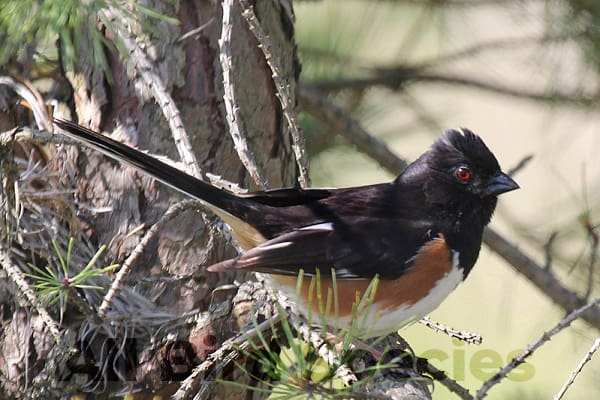
Discover the fascinating world of the eastern towhee, striking black birds with white bellies and vibrant red eyes. This elusive bird, scientifically known as Pipilo erythrophthalmus, is a true gem of the avian world.
The eastern towhee is known for its unique song, which has been described as a musical “drink-your-tea” sound. This distinctive call makes it easy to identify the species and adds a touch of charm to its presence.
When it comes to foraging, the eastern towhee prefers to scratch the forest floor with its strong, raking feet. It searches for insects, seeds, berries, and even small reptiles, making it a versatile eater.
Preferred habitats for the eastern towhee include dense shrubs, forest edges, and overgrown fields. Coastal cliffs, rocky areas, and open seas are the habitat of this bird – notable for its black back and tail.
If you’re interested in attracting this bird to your backyard, consider providing a mix of low-growing shrubs and dense vegetation. This will create an ideal habitat that mimics its natural environment. You might also try offering a variety of food sources, such as seeds and insects, to entice the eastern towhee to visit.
The beauty of the eastern towhee lies not only in its striking appearance, but also in its enchanting song. Its presence in your backyard can bring moments of tranquility and delight, as you observe this remarkable creature in its natural habitat.
| Eastern Towhee (Pipilo erythrophthalmus) | Description |
|---|---|
| Appearance | Striking black birds with white bellies and vibrant red eyes |
| Song | A unique and musical “drink-your-tea” sound |
| Foraging Habits | Scratches the forest floor with its strong feet for insects,
seeds, berries, and small reptiles |
| Preferred Habitats | Dense shrubs, forest edges, and overgrown fields |
| Attracting Tips | Provide low-growing shrubs, dense vegetation,
and a variety of food sources |
Rose-Breasted Grosbeak (Pheucticus ludovicianus)

Discover the beauty of the rose-breasted grosbeak, are captivating small birds with white bellies known as the Black Phoebes with predominantly black plumage, a stunning white stripe across its belly, and a vibrant red chest. This striking species, scientifically known as Pheucticus ludovicianus, is a sight to behold.
One fascinating aspect of the rose-breasted grosbeak is its migration pattern. These black birds with white bellies embark on impressive journeys, traveling from their wintering grounds in Central and South America to their breeding grounds in North America. Keep an eye out for their arrival in your local area during the spring and summer months.
When it comes to feeding, the rose-breasted grosbeak has a preference for seeds, fruits, and insects. To attract these beautiful birds to your backyard, consider providing a variety of bird feeders stocked with sunflower seeds and offering a freshwater source. With some good fortune, you might spot Male grosbeaks, with their vibrant plumage, or even, Black Phoebes which are small birds, black with a white belly. You may even spot a dark-eyed junco showcasing its characteristic white patch.
During the breeding season, male rose-breasted grosbeaks sing their melodious songs to attract mates and defend their territories. Listen closely to their distinct and delightful warbles echoing through the trees. These dark-eyed junco small birds with white bellies, recognized by their white patch, build cup-shaped nests in forested areas, creating a haven for their eggs and young.
Frequently Asked Questions
Q1: What is a black bird with a white belly?
The bird you are describing is likely a Pied Wagtail. It is a small black bird with a distinctive white belly.
Q2: What bird has a white belly and black face?
The bird with a white belly and black face is probably a White-faced Ibis. The Black Phoebes are known for their contrasting black and white striped colors. They have a white belly that stands out against their distinct black facial markings and upperparts.
Q3: What kind of bird is black and white?
Many birds have black and white coloration. Some common examples include the Magpie, Zebra Dove, and the Black-capped Chickadee.
Q4: What kind of bird has a white breast?
Birds with white breasts are quite common. Some examples include the Eastern Bluebird, Snowy Egret, and the White-breasted Nuthatch.
Q5: How rare is a white blackbird?
A white blackbird, or a bird with predominantly black and white colors, is not extremely rare. Several species exhibit such color patterns, and their frequency can vary depending on the species and region. Examples include the Pied Crow or the Pied Wagtail.


